If you have studied Canadian History, you will know that without the establishment of the fur trade, our nation of Canada may have been limited to the banks of Lake Ontario, Lake Erie, the Saint Lawrence River, and the Atlantic Ocean. Without the push of fur traders called Courier du Bois (i.e. Runners of the Woods) and their exploration carving out routes through forests, creeks, lakes, and rivers, Canada may have not been established in the west as it is today.
We know that European and Aboriginal men traveled through these routes transporting large quantities of fur, particularly Beaver fur. The men lived in harsh climates, especially in the 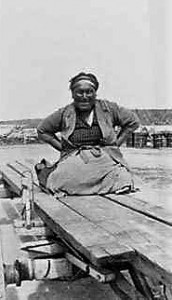 winter. The European men came to North American accustomed to a different less harsh weather, and faced dealing with different food sources and clothing unsuitable for the Canadian climate.
winter. The European men came to North American accustomed to a different less harsh weather, and faced dealing with different food sources and clothing unsuitable for the Canadian climate.
So how did these men survive and who provided the clothing and food needed to face a very different climate?
The answer is evident but not obvious to Canadians … it was the First Nations women who played a vital role in establishing Canada’s fur trade. It was First Nations women who provided travelers and fur traders with the tools they needed to explore Canada.
What tools did the First Nations Women provide?
Knowledge of the Land:
First nations women acted as guides and interpreters for fur trading as they knew the languages and trading customs of many First Nations groups. These women guided Europeans through well established aboriginal trails and trading routes and along Canada’s lakes and rivers. These women knew the best places to camp and how to set up a campsite with fires, meals, and comfortable bedding.
Food for Survival:
First Nations women knew which plants and animals could be eaten. Picking the wrong, leaves, roots, shoots, fruits, and berries to eat could result in sickness or worse, death!
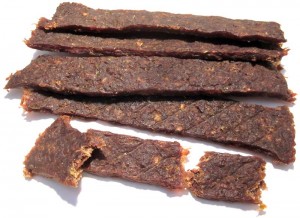 Picking the right food could result in delicious, nourishing meals which provided enough calories to fuel long trips through the wilderness. These women taught Europeans how to fish and trap animals for food as well as preserve food for winter. They taught the Europeans how to plant corn and use it for bread, like bannock or corn stew like sagamit. The First Nations women provided fur traders with high calorie Pemmican made from dried bison, moose, caribou, or venison meat powder mixed with animal fat and berries (see recipe below). Apparently Pemmican can last over 50 years without going bad, now that’s the ultimate survival food!
Picking the right food could result in delicious, nourishing meals which provided enough calories to fuel long trips through the wilderness. These women taught Europeans how to fish and trap animals for food as well as preserve food for winter. They taught the Europeans how to plant corn and use it for bread, like bannock or corn stew like sagamit. The First Nations women provided fur traders with high calorie Pemmican made from dried bison, moose, caribou, or venison meat powder mixed with animal fat and berries (see recipe below). Apparently Pemmican can last over 50 years without going bad, now that’s the ultimate survival food!
Preparing Furs for Trade:
The First Nations women knew how to trap the animals to get the best fur for trade. Once caught, animal furs needed to be prepared for sale. Preparing furs for trade meant work. Furs had to be cleaned through scraping, strung and stretched while drying, and tanned so they did not rot. Well prepared furs sold for high prices.
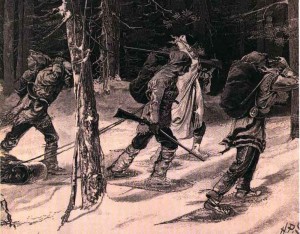
Making Clothing for the Climate:
From the skins and furs, First Nations women made clothing perfect for the Canadian climate. They sewed moccasins, coats, mittens, and leggings to keep traders protected from the elements. They also wove blankets and used furs and skins to make shelters and bedding.
And with the addition to these tools, First Nations women provided the future of Canada with the most important resource, people. First Nations women had common-law marriages with European men who’s union produced a great many generations of hardy future Canadians, ready to survive and thrive in Canada’s northern climate.
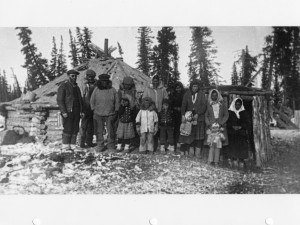
In Fort Albany, in James Bay, Robert Goodwin (1761 – 1805) from Yoxford, England, a Hudson Bay Company surgeon, had “a la facon du pays” or a country common-law marriage with Cree Woman Mistigoose (1760-1797), a Goose Cree woman probably from the Lake Nipigon area. Their first child was Caroline Goodwin (1783-1832). Robert also took on a second Goose Cree wife, possibly a sister or close relatives of Cree Woman’s, called Jenny Mistigoose (1765-1864), daughter of Pukethewanisk. Both these First Nations women likely provided Robert with the supplies, food, and clothing he needed to do his work dealing with broken bones, cuts, infection, consumption (TB), scurvy, smallpox, malnutrition, frost bite, gangrene, gout, and STDs. In 1797, when Robert Goodwin took his son, William Adolphus Barmby Goodwin to England to get an education (and live with his lawyer), William’s Cree mother, Jenny drowned herself from grief in the bay of Fort Albany. In this death in his 45th year, Robert included the support and ongoing care of his wives and over 8 children in his will.
At around the same time, John Hodgson (1764-1833) from St Margaret’s, Westminster, London, was Hudson Bay Company’s Fort Albany Chief Factor (between 1800 & 1810). John Hodgson had a country marriage with Ann, a Cree Woman, possibly from Thunder Bay. Their union produced a first born son, James Hodgson (1782-1826) also know as James Hudson. Ann supported her husband by providing him with food, shelter, and clothing to sustain him in his work and at the same time gave birth to over 12 children.
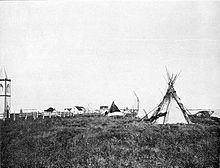
Caroline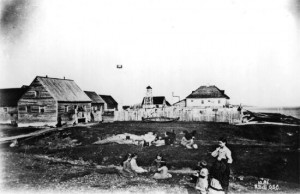 Goodwin married James Hudson and had over 16+ children together.
Goodwin married James Hudson and had over 16+ children together.
Their 7th child was Mary Ann Hudson, granddaughter to Robert Goodwin, Cree Woman (wife #1) Mistigoose, John Hodgson, and Ann Mistigoose.
Mary Ann Hudson was also my third great grandmother (discovered in 2017).
So, not only were the First Nations women important to the support and expansion of Canada’s fur trade, these women also helped establish the population of our future Canada. Today, like me, Canadians are here because they have, knowingly or unknowingly, First Nations, Métis, and Inuit ancestry.
So when Rosanna Deerchild on CBC Radio welcomes listeners as “your favourite cousin”, indeed, some Canadians may truly be all cousins.
Next time you look at a Beaver on the Canadian nickel … remember who did all the work to make the fur trade a success in Canada.
Collaboratively Yours,
Deb Weston
PS: Unfortunately, none of the people in these pictures are related to me.
How To Make Pemmican
We recommend trying HQ’s recipe as stated above, but if you’re looking for more precise instructions, we found this pemmican recipe by the University of Minnesota. This recipe makes 3.5 lbs. http://www.alloutdoor.com/2014/01/28/this-pemmican/
Ingredients:
- 4 cups dried meat (only deer, moose, caribou, or beef)
- 3 cups dried fruit (currents, dates, apricots, or apples)
- 2 cups rendered fat (only beef fat)
- 1 cup unsalted nuts (optional)
- 1 tbsp of honey (optional)
Supplies:
- Cookie sheet
- Mortar and pestle
- Kitchen knife
Instructions:
First, dry the meat by spreading it thinly on a cookie sheet. Dry at 180° overnight, or until crispy and sinewy.
With the mortar and pestle, grind the dried meat into a powder.
Add the dried fruit and grind accordingly, leaving some larger fruit chunks to help bind the mixture.
Cut the beef fat into chunks.
Heat the stove to medium, and cook the beef until it turns to tallow (rendered fat).
Stir the fat into the powdered meat and fruit mixture.
Add nuts and honey to improve taste (optional)
Shape pemmican into balls or bars for easy and quick consumption. We recommend wrapping individual servings in wax paper or storing in plastic bags.
References
Rosanna Deerchild
http://www.cbc.ca/news/indigenous/rosanna-deerchild-1.2813088
Robert Goodwin
https://www.gov.mb.ca/chc/archives/hbca/biographical/g/goodwin_robert.pdf
http://www.metismuseum.ca/media/document.php/07205.Notes%20on%20Robert%20Goodwin.pdf
John Hudgson
https://www.gov.mb.ca/chc/archives/hbca/biographical/h/hodgson_john.pdf
http://www.biographi.ca/en/bio/hodgson_john_6E.html
“She is Particularly Useful to Her Husband”: Strategic Marriages Between Hudson’s Bay Company Employees and Native Women – https://www.nps.gov/articles/hbcmarriages.htm

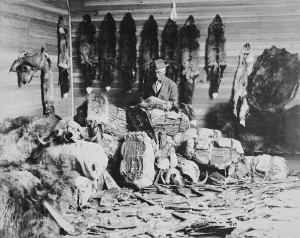
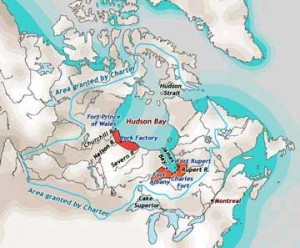
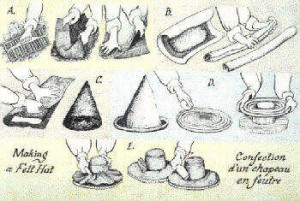
I am related to Mary Hudson b.1806, daughter of John and Ann. I’m trying to find out more information about Ann. You list her as Ann Mistigoose… I thought Mistigoose was Caroline’s mother. Can you please confirm if Ann was related to Caroline’s mother?
Hello cousin,
It has taken me a while to go through all the research through the Hudson Bay Company, ancestry.ca and Red River Ancestry.ca. It can be confusing. I also exchange emails with a newly found Ebert cousin, and an adept genealogist, who lives in Timmins, Ontario. There are many Mary Hudsons … here is mine.
5th great-grandparents
Cree Woman Wife # 1 Mistigoosh (1765-1798)
Dr. Robert Goodwin (1761-1805)
5th great-grandparents
Ann Cree Woman Mistigoosh (1763-1826)
John Hodgson Sr (1764-1833)
Caroline Goodwin (1783-1832)
4th great-grandmother, daughter of Cree Woman Wife # 1 Mistigoosh and 4th great-grandmother, Dr. Robert Goodwin
James R Hodgson Hudson (1782-1832)
4th great-grandfather, son of John Hodgson Sr (1764-1833) and 4th great-grandmother Ann Cree Woman Mistigoosh (1763-1826)
Mary Hudson/Hodgson (1806 – 1900)
daughter of James Hodgson Sr and Caroline Goodwin (1783-1832)
Margaret Frost (1834 – 1900)
daughter of Mary Ann Hodgson Hudson and Samuel Frost (1804-1879)
Mary Carson Ebert (1860-1917)
daughter of Margaret Frost and Robert Carson (1837-1916)
George Wesley Ebert (1897-1958)
son of Mary Carson Ebert and my grandfather
Elizabeth Anne Ebert (1938- )
daughter of George Wesley Ebert and my mother
Deborah PA Weston
daughter of Elizabeth Anne Ebert
Here are some links that can help you.
https://www.redriverancestry.ca/GOODWIN-ROBERT-1761.php
https://www.gov.mb.ca/chc/archives/hbca/biographical/g/goodwin_robert.pdf
http://www.metismuseum.ca/resource.php/07205
https://www.wikitree.com/wiki/Mistigoose-2
I would be happy to discuss with you more via email, if you wish.Before I started researching my ancestry … I thought my mother’s side was German 🙂
Deb Weston
My family tree is from Mary Hudson and Samuel Frost line from Fort Coulonge Quebec.
I am same lineage and have been collecting info for years
my email address pd.frost@shaw.ca
I also have a closed site on Facebook (for Frost descendents of Samuel Frost) “The Ottawa Valley Frosts”
I’ll email you soon – most of my research comes from HBC … Mistigoose is a name for the First Nations in the area … I was perplexed about it too when I first discovered this link. A Frost cousin of ours in Moosenee told me what it meant.
dpaweston@bell.net
I have been researching for over 30 years. Mary Hodgson (1806 NWT) who was married to Samuel Frost was the daughter of John Hodgson Sr and Ann Native of the land. Caroling Goodwin and James (Mary’s brother) also had a daughter names Mary (1816). I have done my research by actual documents and the Archives of Canada. There is also a closed site that is for descendents of Samuel Frost where we exchange info…The Ottawa Valley Frosts.
Can you please add me to the Feb page
That’s supposed to be Facebook not Feb. Aswell Mary Perry, I cannot find anything about her other then her name?
Hello, after reading your page I think we may be distant cousins. I’ve been using different search tools and the Mary Ann Hudson (Hodgson) I am related to married Samuel Frost… is this the same Mary Ann? I am unable to find any fur trade, census records or gov’t documents stating that Mary Anne Hudson married to Samuel Frost is the daughter of Caroline Goodwin & James R Hudson (Hodgson). thanks for putting your findings out there
Ann Hodgson’s parents are John Hodgson Sr and Ann Native of the Land
You can reach me by email pd.frost@shaw.ca
Here is a Quebec Notarial Record which has Mary Hodgson ;her Brother Joseph and there father John Hodgson Sr. on it;also it does mention her late husband Samuel Frost.Google>Family Search>Canada>Quebec>Quebec Notarial Records>1800-1920>Hull Quebec>Charles Barsalou>1886-1887>image 132, 133,134,135 of 503…….mike.
Thanks for the information.
Deb Weston
Where exactly would I find this information.
My name is Patty Frost and I have been doing the Family tree since the early 90s. It was something my dad asked me to do but unfortunately was not and still is not fully completed. I have a group page The Ottawa Valley Frost for descendants of Samuel Frost and Mary Hodgson. I advise the members onsite do not believe all you see on Ancestry as people have posted information that they read but has not be verified. I am trying to complete my tree by documentation.
Thanks Patty. I have been told about your group facebook page. My sources are via the Hudson Bay documents.
Deb Weston
mine too. I go by documents as they are reliable. Anne Cree woman Mistigoose would love to know where you got that info. Know Goodwin and Mistigoose are Carolines monther. I have Mary Hodgson (married Samuel Frost) parents as John Hodgson SR and Ann Native of the Land
Hi
Can you provide documentation of Mary Ann Hodgens/Hudson’s mother birth certificate or Marriage certificate.
Hello Patty,
I also am related to Mary Hodgson and Samual Frost through their son Moses who was my great grandfather. I would be very interested in what you have found. My sister and I have also done years of research.
Marlene
I talked, on the phone, to a son/grand son of Moses who told be he was a wonderful man. The person lives in North Bay. He was glad to have found the Ebert connection as he was looking for my mother’s side of the family.
Deb Weston
Hi Deborah, or should I say cousin! I was wondering if we could connect via email. If you have a moment, I think you could answer some questions I have about our ancestors.
Hi Cherie!
I am a cousin! I am looking for information from my 5th great grandparents Mistigoose and Robert. But through their first daughter Caroline’s line. If you have any info I would be ever so grateful! Also, thank you Deb for your wonderful information and story telling!!!
Falynnicholl@gmail.com
Caroline Goodwin married James/2 Hodgson about 1809 is my ggg grandmother looking for proof of marriage like certificate anything to say they were married any help where to look
I was a “country marriage” not official but they had many children … Caroline’s father was the surgeon of Fort Albany.
Thanks for reaching out cousin!
Deb Weston
Records from Husdson Bay Company
https://www.gov.mb.ca/chc/archives/hbca/biographical/h/hodgson_james.pdf
https://www.redriverancestry.ca/HODGSON-JOHN-1763.php
https://www.wikitree.com/wiki/Goodwin-4330
Post Master and Chief Factor at Albany
1800-1810
In 1800 John became the Post Mater at Albany, succeeding John McNAB. That year his eldest son James arrived from England (where he was educated), having been appointed as an Assistant Writer and Trader at Albany, under his father’s supervision.
In 1801 Englishman Robert GOODWIN (1761-1805) was appointed as second in command at Albany, at which time his teen-age half-breed daughter, Caroline GOODWIN began a connubial relationship with John’s eldest son, James HODGSON. ** MORE ABOUT ROBERT GOODWIN
https://www.redriverancestry.ca/HODGSON-JOHN-1763.php
This site says the bbc archives said there marriage was official
https://www.wikitree.com/wiki/Mistigoose-2
Meant HBC Hudson Bay
Hi Deb, we are currently in the process of doing our family tree.
And would like to know more along this bloodline ( Robert goodwin & Mistigoose )
Megan,
Thanks for your note.
I’ve been working on finding out more about this ancestry line but I have not been able to dig any deeper.
Here are some links … hope this helps. Get back to me if you find more!
Deb Weston
https://www.redriverancestry.ca/GOODWIN-ROBERT-1761.php
http://www.metismuseum.com/resource.php/07205
Hello, I am fascinated with all your posts. It looks like we could be related. I am a descendant of Robert Goodwin and Jenny Mistigoose through William AB Goodwin. Just wanted to say Hi as I landed on here doing research and I noticed all of your post.
Thanks for the response!
Deb
Do you have any documents on Jenny Mistigoose showing marriage to Robert Goodwin or her birth record or parents?
We have records of his marriage to Mistigoose but not his 2nd Cree woman Jenny